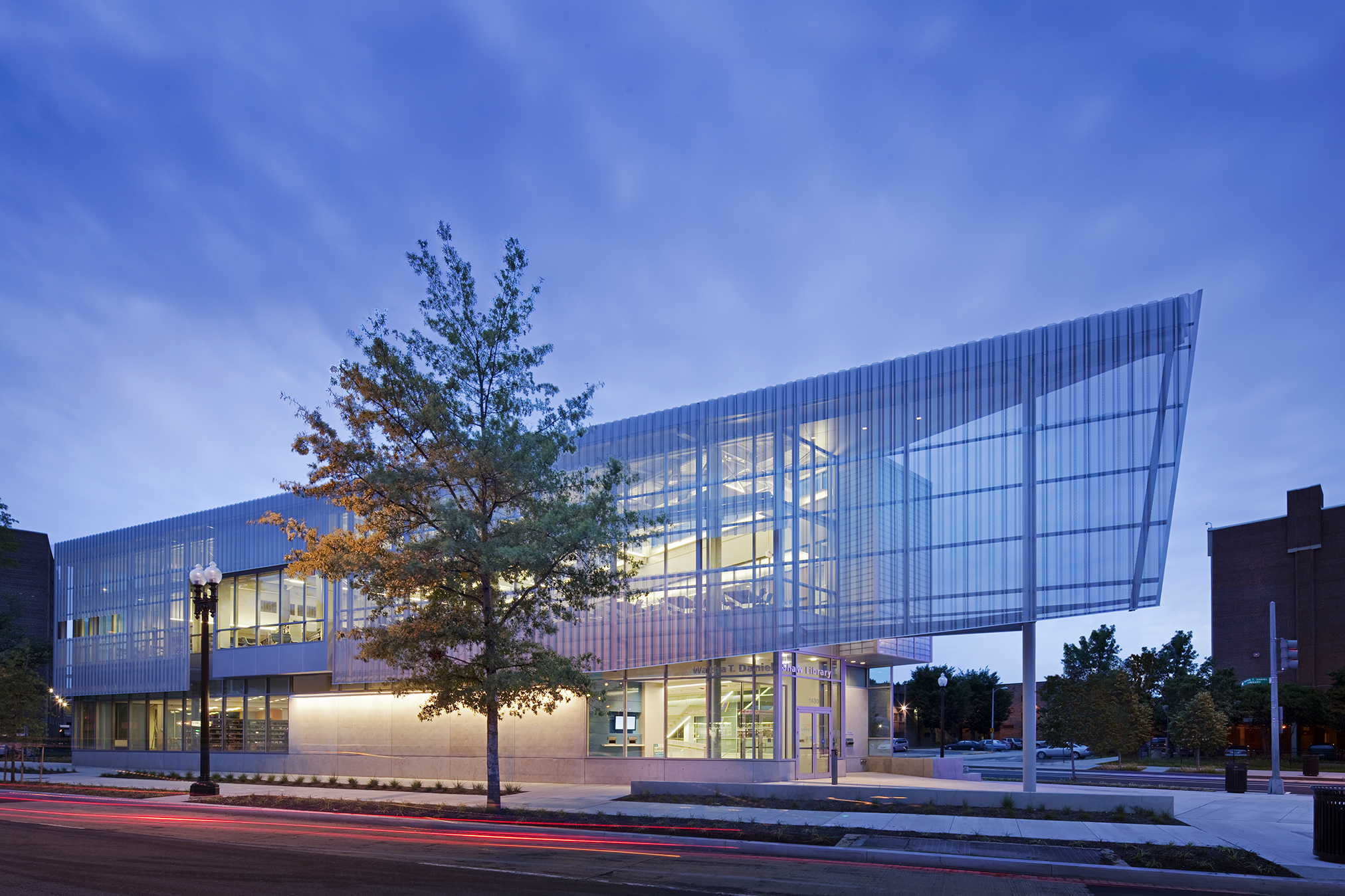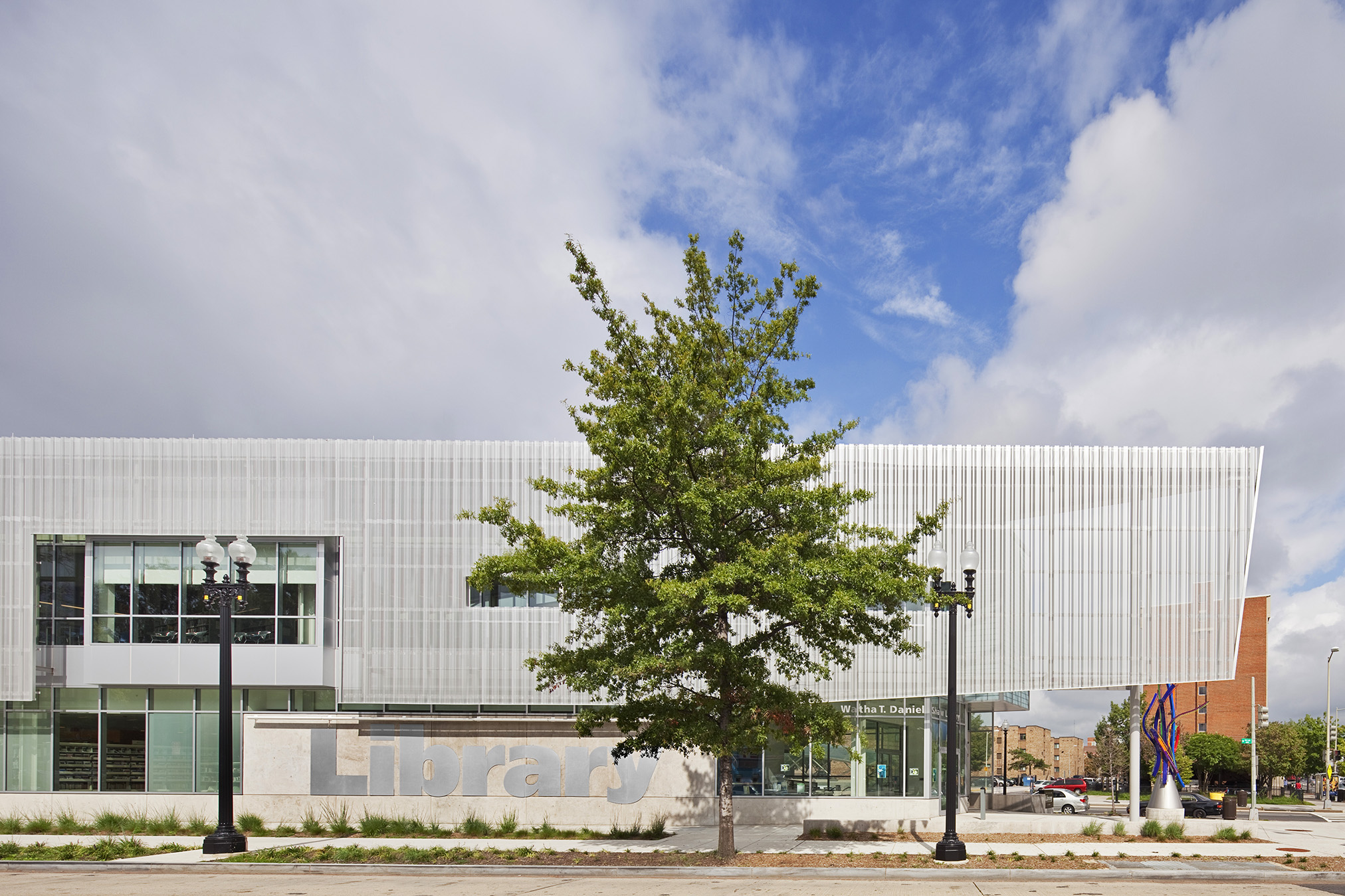DC Public Library
Watha T. Daniel / Shaw Library
Washington, DC
20,000 SF • 1,860 SQ M • LEED GOLD
As part of DC Public Library’s Building Program, the new Watha T. Daniel/ Shaw Library is one in a series of new libraries in Washington designed to be flexible and open, to meet the needs of the community now and in the future. Located in the Shaw neighborhood of Washington, DC, the facility is located on a triangular urban site near Howard University. The new library marks this important intersection as a civic and educational node for the community. Filling the site, the building is comprised of three stories, one below grade and two above. The entry plaza at the east end of the site welcomes the public to the library.
The main lobby provides access to the lower level which houses community spaces including a 100 person multi-purpose room. The ground floor houses the new materials and catalog stations for the general collections, the children’s library and the main service point and staff area. The upper level of the library houses the bulk of the adult collection, including reference and periodical sections,and reading rooms. There are online catalogs dispersed throughout the floor, with access to the DC Public Library electronic resources available at all locations. The library has 32 computers for public use, providing internet access to all in the community. The library also offers two 10-person conference rooms and individual study rooms to allow for collaborative work in a non-disruptive setting.
Certified LEED Gold, the library incorporates a vegetative green roof, displacement air system, solar control and daylight management and extensive use of recyclable and renewable materials. The building utilizes a corrugated, perforated aluminum screen wall system across its southern façade. With a 40% open area, the screen wall sits three feet in front of an expansive glazed curtain wall and provides sufficient shading of the upper level reading room while allowing natural daylight to enter the space. The shading system allows a reduced dependence on artificial lighting and its related energy costs as well as protects the library’s collection from harmful solar exposure.
(Photography by Paúl Rivera)







